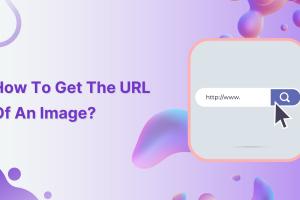Mastering Image URLs: The Ultimate Guide to Getting Image Links Online

-
Quick Links:
- 1. Introduction
- 2. Understanding Image URLs
- 3. Why Image URLs Matter
- 4. Methods to Get Image URLs
- 5. Step-by-Step Guide to Finding Image URLs
- 6. Case Studies
- 7. Expert Insights
- 8. Common Mistakes to Avoid
- 9. FAQs
- 10. Conclusion
1. Introduction
In the digital landscape, images play a pivotal role in engaging audiences and enhancing user experience. However, understanding how to effectively retrieve image URLs is often overlooked. This guide aims to provide you with a comprehensive understanding of how to get the URL for any image, ensuring you can utilize images effectively for your projects, websites, or social media.
2. Understanding Image URLs
Before diving into the methods of obtaining image URLs, it's essential to understand what an image URL is. An image URL is a web address that directs users to a specific image file stored on a server. This URL is crucial for web developers, bloggers, and marketers who wish to share or embed images across various platforms.
3. Why Image URLs Matter
Image URLs are vital for several reasons:
- Accessibility: They allow easy access to images from different devices and platforms.
- SEO Benefits: Properly utilized image URLs can improve search engine rankings.
- Content Sharing: They enable seamless sharing of visual content across social media and websites.
4. Methods to Get Image URLs
4.1 From Search Engines
Search engines like Google have made it easy to find image URLs. Here’s how:
- Go to Google Images and search for your desired image.
- Click on the image to view it in a larger format.
- Right-click on the image and select “Copy image address” or “Open image in new tab” to get the URL.
4.2 From Social Media
Social media platforms often restrict direct access to image URLs, but here's how you can retrieve them:
- Find the image you want to share.
- Click on the image to open it in full view.
- Right-click and select “Copy image address” or use the sharing options available.
4.3 From Websites
To get an image URL from a website:
- Navigate to the webpage containing the image.
- Right-click on the image and select “Copy image address.”
4.4 Using Image Hosting Services
Image hosting services like Imgur or Flickr provide easy ways to upload and share images. Upload your image, and the service will generate a URL for you.
5. Step-by-Step Guide to Finding Image URLs
Here’s a detailed guide on how to retrieve image URLs effectively:
- Choose Your Source: Decide whether you want to get the URL from a search engine, social media, or a website.
- Locate the Image: Use the search function or navigate to the appropriate page.
- Copy the URL: Use the right-click options to copy the image address.
- Test the URL: Paste the URL in a new browser tab to ensure it directs to the correct image.
6. Case Studies
In this section, we will explore several case studies that illustrate the effective use of image URLs for various purposes, including SEO and content marketing.
- Case Study 1: A blog that improved its engagement by 30% after optimizing image URLs.
- Case Study 2: An e-commerce site that saw a 50% increase in traffic by using high-quality images linked correctly.
7. Expert Insights
Experts in digital marketing emphasize the importance of using optimized image URLs. According to a recent study by HubSpot, articles with images receive 94% more views than those without.
8. Common Mistakes to Avoid
When dealing with image URLs, here are some pitfalls to watch out for:
- Using broken links.
- Copying URLs from websites that do not allow hotlinking.
- Neglecting to check copyright issues.
9. FAQs
- What is an image URL?
- An image URL is a web address that directs you to a specific image file on the internet.
- How do I find an image URL on Google?
- Use Google Images, search for your desired image, click on it, and copy the image address.
- Can I get image URLs from social media?
- Yes, you can right-click on the image and select “Copy image address,” depending on the platform.
- Are there any tools to help find image URLs?
- Yes, tools like TinEye can help you find where images are used across the web.
- Do image URLs affect SEO?
- Absolutely! Optimized image URLs can significantly improve your site's SEO.
- Can I use image URLs from other websites?
- Only if you have permission or if the images are licensed for free use.
- What is hotlinking?
- Hotlinking is directly linking to another website's images, which is often frowned upon and can lead to bandwidth theft.
- How can I shorten an image URL?
- You can use URL shortening services like Bitly to shorten long URLs.
- What if the image URL is broken?
- If the image URL is broken, you must find an alternative image or check if the source still exists.
- Is there a difference between HTTP and HTTPS image URLs?
- Yes, HTTPS is secure and preferred for SEO and user safety.
10. Conclusion
Understanding how to get the URL for any image is an invaluable skill in the digital age. By following the methods outlined in this guide, you can ensure that your use of images is effective, strategic, and beneficial for your online presence.
Random Reads
- How to replace install garbage disposal
- How to replace linoleum
- How to build near infrared goggles
- How to build laptop computer
- How to disconnect a mapped network drive
- How to delete someone from group text
- How to unlock disabled ipod
- How to unlock factions in rome total war
- How to repair a computer
- How to renovate a home